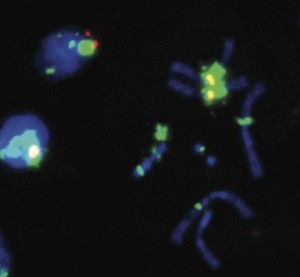Satellite DNAs make up a large fraction of eukaryotic genomes and have important functions in chromosome pairing and segregation. The rapid evolution of satellite DNAs is a major force contributing to genome evolution across taxa and is implicated in genetic incompatibilities between species.

We use genomic, molecular and cytological techniques to study the forces driving the rapid divergence at satellite repeats in Drosophila populations and across Drosophila species. By developing methods to quantify satellite repeats using next generation sequencing and other molecular approaches, we have the ability to study the dynamics of satellite DNA evolution on a fine time scale.
The misregulation of satellite DNA is linked to genome instability, some cancers, and hybrid dysgenesis. We currently know little about the regulation of satellite DNA and the origin of satellite-derived RNAs. We use molecular, genomic and cytological approaches to study the expression and maintenance of satellite DNA across Drosophila species.
This work is supported by an NIH MIRA (NIGMS) award to AML.
